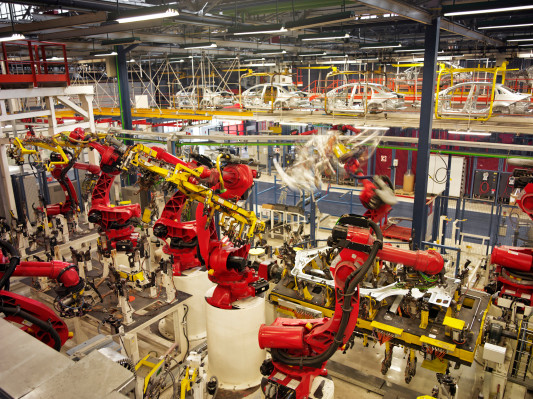One of the major challenges facing engineers as they develop more agile robots is helping them move through space while avoiding collisions, especially in a dynamic environment. Realtime Robotics, a Boston-based startup, announced an $11.7 million Series A investment to help solve this problem.
SPARX Asset Management led the round, with participation from some strategic investors, including Mitsubishi Electric Corporation, Hyundai Motor Company and Omron Ventures. Existing investors Toyota AI Ventures, Scrum Ventures and the Duke Angel Network also pitched in. Today’s investment is actually the culmination of a couple of investments over this year that the company is announcing today, and brings the total raised to $12.9 million.
Realtime Robotics CEO Peter Howard says the company’s solutions are grounded in advanced research on robotic motion planning. “We are based on research work done at Duke University in 2016 in the field of work called robotic motion planning, which is basically how a six or seven degree of freedom robot finds its way through space without hitting anything,” Howard told TechCrunch.
It’s an extremely difficult problem to solve, especially in dynamic environments where robots are interacting with humans and other robots, and you can’t necessarily predict with precision the kinds of movements the robot will have to make. The company has created a two-part solution to help, called RapidPlan and RapidSense, which it describes as, “allowing people and multiple robots to work collaboratively and cooperatively within the same work cell, without the need for expensive safety systems or time-consuming programming efforts.” The solution involves a combination of proprietary hardware and software working together to help robots move through space safely.
It’s still very early days for the startup. It’s currently working with 13 customers on proof of concept projects with a goal of having these customers act as OEMs and sell the products on behalf of the company. He said that major robotics companies are working with the technology, as well as several automotive companies, which would also have an interest in collision avoidance with self-driving cars. In fact, Toyota was one of its earliest investors and Hyundai is an investor in this round.
Howard says once it establishes itself in these markets, he could see looking at other industries that could make use of this technology, such as agriculture, food service and construction. “Anywhere where people are currently employed principally for their motor skills, you can think of as a market that’s fairly ripe for [this type of technology],” Howard said.










